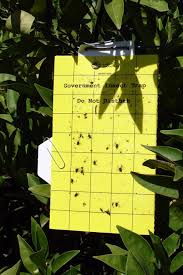By Nicholas Goeser and Tom Grumbly
The new administration of the president elect will break from tradition in many obvious ways—but some of the most important changes will take place under the radar. One that no one is talking about yet is the director of the Office of Science and Technology Policy.
This relatively obscure appointee holds the power to coordinate and shape policy across federal agencies, and the director is also traditionally the chief science advisor to the President. Historically, this position has been held by physicists. This made sense in the 20th century when America’s most consequential scientific accomplishment was sending men to the moon and our most terrifying threat was the nuclear bomb.
Today, however, genomics is the cutting edge of science – the developers of genome editing won this year’s Nobel Prize in Chemistry, and humanity’s most pressing, existential threat is climate change. To effectively advise on the most important challenges of the 21st century, not only climate change, but the interconnected issues of global health, mass migration, food production, and environmental protection, President-Elect Biden will need a science advisor with deep knowledge of the life sciences—especially agriculture, the linchpin of America’s fight against climate change.
Agricultural and forest soils have the potential to sequester enough carbon to make our entire country carbon neutral, if not a carbon sink. In addition to curbing greenhouse gas emissions, agriculture science is needed to address the devastating effects of climate change’s initial stages. U.S. farmers and ranchers need tools to deal with droughts, heavy rains, and warming trends that bring new pests and diseases.
Current science is far ahead of practice when it comes to on-farm carbon sequestration and climate resilience. Federal and state policies often fail to encourage best practices, and lawmakers do not provide sufficient funding for the cooperative extension programs that disseminate new innovations.
These problems are not insurmountable. Rural America could play a decisive role in mitigating climate change. Paying farmers, ranchers, and forest owners to sequester carbon on their land, for example, land that represents nearly two thirds of all the land in the United States, would contribute to President-Elect Biden’s goal of making the country carbon neutral – while bringing co-benefits to rebuild rural economies and communities, enhance water quality and preserve biodiversity.
Additionally, policies that take tools away from farmers and ranchers in the name of environmental protection, without offering anything to substitute for that loss, have engendered deep mistrust. Current policies rarely empower rural Americans to be part of the solution. For example, paying farmers through carbon markets that are underpinned by soil science would give tools back to farmers and ranchers, not take them away. It would help small farmers, rebuild rural communities, and the land itself would benefit from increased soil organic carbon, which retains more moisture and nutrients.
Although the U.S. Department of Agriculture (USDA) will certainly need to play a central role in driving policies that expand domestic farmers’ engagement with carbon sequestration and climate resiliency, USDA has no jurisdiction over policies that aim to solve the global challenges of mass migration, political unrest, and terrorism created by climate change. Further, the president will need a science advisor who has a strong understanding of agricultural and ecological science and policy to tie all these pieces together.
The incoming administration has already started appointing leaders to address the devastating effects of climate change, but we also need to help rural Americans and tackle their concerns. The Biden-Harris Administration will need a chief science advisor who understands and promotes science and innovation that will give farmers a heroic purpose. In the 20th century, that purpose was “feeding the world.” Today, that purpose is curbing climate change. Making farmers the climate heroes, and letting them take pride in that role, will reduce fear, increase trust, and enable the country to pivot to climate smart policies across the board.
Nicholas Goeser, Ph.D., Chief Executive Officer, American Society of Agronomy, Crop Science Society of America, Soil Science Society of America
Tom Grumbly, President, The Supporters of Agricultural Research (SoAR) Foundation






